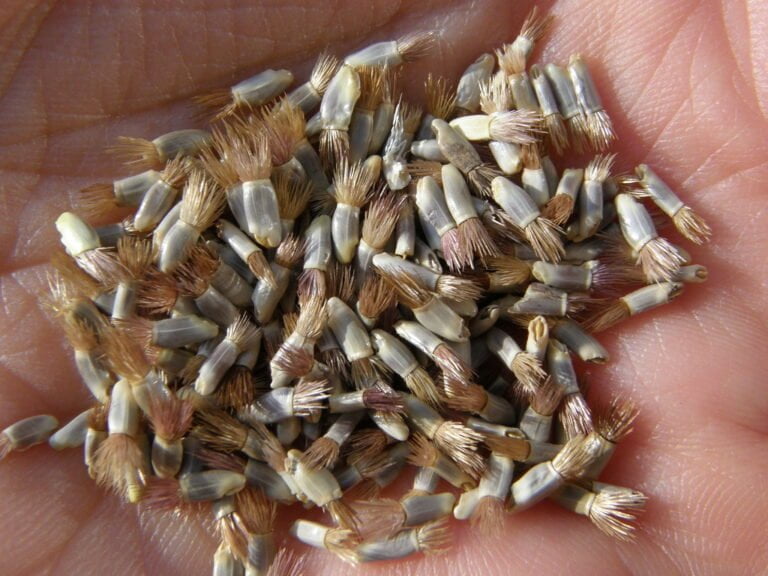Step-By-Step Guide to Growing Rosemary From Seed
Are you ready to embark on the journey of growing your own rosemary from seed? This step-by-step guide will walk you through the entire process, from choosing the right seeds to harvesting and using fresh rosemary. With a few simple steps, you'll be able to enjoy the aromatic and flavorful benefits of homegrown rosemary in no time. So grab your gardening gloves and get ready to cultivate your very own rosemary garden. Let's get started!
Choosing the Right Seeds
When choosing the right seeds for growing rosemary, consider the variety and freshness of the seeds. Opt for certified organic or non-GMO seeds to ensure the highest quality and purity. Rosemary seeds come in different varieties, such as Tuscan Blue, Arp, and Spice Island, each with its unique flavor and growth characteristics. Decide on the variety that best suits your needs and preferences. Freshness is crucial, as older seeds may have a reduced germination rate. Check the seed package for the date of harvest or expiration to ensure you're getting the freshest seeds available. Additionally, consider purchasing seeds from reputable suppliers who specialize in herb seeds. They often have a wider selection and provide valuable information on cultivation and care. Remember, choosing the right seeds is the first step towards a successful rosemary garden.
Preparing the Soil for Rosemary
To prepare the soil for growing rosemary, you will need to ensure that it is well-drained and has a pH level between 6.0 and 7.0. Rosemary thrives in well-drained soil, so it is important to avoid waterlogged areas. You can improve drainage by incorporating organic matter, such as compost or aged manure, into the soil. This will help loosen compacted soil and enhance water infiltration. Additionally, it is recommended to test the pH level of your soil using a soil testing kit. If the pH is below 6.0, you can raise it by adding lime. On the other hand, if the pH is above 7.0, you can lower it by adding elemental sulfur. By ensuring proper soil drainage and pH levels, you are creating an ideal environment for your rosemary plants to flourish.
Sowing Rosemary Seeds Indoors
To successfully sow rosemary seeds indoors, you will need patience, attention to detail, and proper materials. Start by filling a seed tray with a good quality seed compost. Gently press down the compost to create a level surface. Sprinkle the rosemary seeds evenly across the tray, making sure to keep a distance of about 1 inch between each seed. Next, cover the seeds with a thin layer of compost, approximately 1/8 inch deep. Mist the tray with water to ensure the seeds are adequately moistened. Place the tray in a warm location with indirect sunlight. It's important to maintain consistent moisture levels, so check the tray regularly and mist as needed. It usually takes about 2-3 weeks for the seeds to germinate. Once the seedlings have sprouted, continue to provide them with indirect sunlight and water as necessary.
Transplanting Rosemary Seedlings
Now, it's time for you to transplant your rosemary seedlings. Transplanting your seedlings is an important step in their growth journey, as it allows them to establish strong roots and thrive in their new home. Before you begin, make sure to choose a sunny spot in your garden with well-draining soil. Gently remove the seedlings from their containers, being careful not to damage the delicate roots. Dig a hole in the garden that is slightly larger than the root ball of each seedling. Place the seedling in the hole, making sure that the top of the root ball is level with the surrounding soil. Fill in the hole with soil and gently press it down to secure the seedling. Water the newly transplanted seedlings thoroughly and continue to keep the soil moist during the first few weeks to help them establish. Congratulations! Your rosemary seedlings are now ready to grow and flourish in their new home.
Providing Adequate Sunlight
To ensure the healthy growth of your transplanted rosemary seedlings, it is vital to provide them with adequate sunlight. Rosemary is a sun-loving herb that thrives in full sunlight. Choose a location in your garden that receives at least six to eight hours of direct sunlight each day. It is best to plant your rosemary seedlings in a spot that is sheltered from strong winds, as they can easily damage the delicate leaves. If you're growing rosemary indoors, place it near a south-facing window or use grow lights to provide sufficient light. Remember to rotate the plant regularly to ensure even exposure. Adequate sunlight is crucial for rosemary to develop strong stems, lush foliage, and vibrant flavors.
Watering Rosemary Plants
You should water your rosemary plants regularly to ensure their healthy growth. Rosemary plants prefer well-drained soil, so it's important not to overwater them. Aim to keep the soil evenly moist, but not waterlogged. As a general rule, water your rosemary plants when the top inch of soil feels dry. This will help prevent root rot and other water-related issues. When watering, make sure to water the base of the plant rather than the leaves, as wet foliage can lead to disease. Use a watering can or a hose with a gentle spray attachment to avoid damaging the delicate roots. Remember to adjust your watering schedule depending on weather conditions, as rosemary plants may require more water during hot, dry periods. By providing adequate and consistent moisture, you'll ensure the healthy growth of your rosemary plants.
Fertilizing Rosemary Seedlings
After ensuring proper watering, it is important to fertilize your rosemary seedlings to provide them with the necessary nutrients for healthy growth. Fertilizing your seedlings will help them develop strong roots and vibrant foliage. Start by choosing a balanced, water-soluble fertilizer with equal amounts of nitrogen, phosphorus, and potassium. Dilute the fertilizer according to the package instructions, usually around 1 tablespoon per gallon of water. Apply the fertilizer once every two weeks during the growing season, making sure to saturate the soil around the seedlings without getting the foliage wet. Avoid over-fertilization, as it can lead to weak growth and damage the plants. Regularly monitor your seedlings for any signs of nutrient deficiencies, such as yellowing leaves or stunted growth, and adjust your fertilization schedule accordingly. With proper fertilization, your rosemary seedlings will thrive and eventually become aromatic, flavorful plants.
Pruning and Training Rosemary
Once the rosemary seedlings have reached a height of about six inches, it's time to start pruning and training them for optimal growth. Pruning helps stimulate the growth of new branches and keeps the plant compact and bushy. To prune, use sharp pruning shears and trim the top one-third of the plant, cutting just above a node where new growth is emerging. This encourages branching and prevents the plant from becoming leggy. Training rosemary involves shaping the plant to grow in a desired form. You can do this by gently bending the branches and tying them with soft plant ties to a support structure, such as a trellis or stakes. Regular pruning and training will help promote a healthy and attractive rosemary plant.
Protecting Rosemary From Pests and Diseases
To protect your rosemary plants from pests and diseases, it is important to implement proactive measures. One of the most effective ways to keep pests at bay is to regularly inspect your plants for any signs of infestation. Look out for aphids, spider mites, and whiteflies, as these are common pests that can damage your rosemary. If you spot any pests, remove them by hand or use a gentle spray of water to wash them away. Another preventive measure is to keep your rosemary plants well-maintained and healthy. Ensure they are well-watered, but not overwatered, and provide them with proper sunlight and good air circulation. This will help strengthen the plants and make them more resilient to diseases. Additionally, avoid overcrowding your rosemary plants as this can create a breeding ground for pests and diseases. By following these proactive measures, you can protect your rosemary plants and ensure they thrive in your garden.
Harvesting and Using Fresh Rosemary
When you have successfully grown rosemary from seed, you can begin harvesting and using fresh rosemary in your culinary creations. Harvesting rosemary is simple and can be done throughout the growing season. To harvest, simply snip off a few sprigs of rosemary using clean, sharp scissors or pruning shears. It is best to harvest in the morning when the essential oils in the herb are at their peak. When using fresh rosemary in your cooking, remove the leaves from the stem and chop them finely to release their aromatic flavor. Fresh rosemary is a versatile herb that pairs well with roasted meats, potatoes, vegetables, and even bread. Enjoy the vibrant flavors and fragrant aromas of freshly harvested rosemary in your dishes, and impress your guests with your culinary skills.
Conclusion
Now that you have followed this step-by-step guide, you are well-equipped to grow rosemary from seed successfully. By choosing the right seeds, preparing the soil, sowing indoors, transplanting seedlings, providing adequate sunlight, fertilizing, pruning, and protecting against pests and diseases, you can ensure healthy growth. Finally, you can harvest and enjoy the fragrant and flavorful benefits of fresh rosemary in your culinary creations. Happy gardening!






